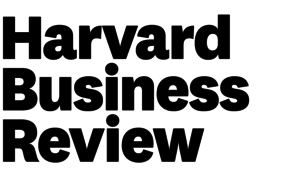Go Beyond
Description
These resources will help you to adopt internal practices that are more stringent than those required by regulation or common standards.
Share this Practice on:LinkedIn
Resources
Changing the Fabric of Our Lives
This moving story explores how Patagonia was motivated by their concern for wildlife, rising costs, and their skepticism over the effectiveness of pesticides to embark on a risky, $20 million pivot - away from conventional cotton, and towards organic cotton. The company partnered with others to create new standards and certifications for regenerative, organic agricultural practices. This bold, environmentally conscious approach has paid immense dividends, and Patagonia has emerged as a highly profitable sustainability champion. If you're in pursuit of inspirational tales of companies allowing risky yet clear-eyed aspirations to guide their strategy, look no further.
Guide to Critical Shifts: the critical shifts needed for a business to adopt a just and regenerative mindset
Designed to accompany the Compass for Just and Regenerative Business report, this resource from Forum for the Future can help you understand the critical shifts businesses can make to adopt a just and regenerative mindset. The guide explains the idea of critical shifts and outlines the critical shifts your business can make in its approach to seven key sustainability issues. It also highlights how different business functions can shift their approach to become more just and regenerative. The guide will be useful for professionals from across your organisation, with specific guidance provided for procurement, operations, marketing, HR, corporate affairs, leadership and management, strategy, and finance.
Beyond Sustainability: Guayakí's Regenerative Approach To Business
This interview with the CEO of the purpose-driven beverage company Guayakí Yerba Mate can help you understand how businesses can go beyond doing less harm to enabling social and ecological regeneration. It explores the company’s Market-Driven Regeneration model, which is based on creating mutual success with local communities and ecosystems. The company does this by fostering long-term relationships with communities, ensuring living wages across the supply chain, and farming within a forest environment to support biodiversity. The interview also looks at broader business challenges related to sustainability certifications, marketing sustainability, and governance. This example will serve as a useful model for business leaders and sustainability practitioners seeking to advance regenerative practices.
Companies Are Scaling Back Sustainability Pledges. Here’s What They Should Do Instead.
Between 2023 and 2024, many companies retreated from their sustainability commitments. This HBR article can help you understand why this lapse in commitment is shortsighted and how to get back on track. The author, Kenneth Pucker, explains the common financial and political factors responsible for this rollback and outlines how companies can move forward. This involves replacing unrealistic targets with meaningful actions; rethinking supplier relationships to account for impacts that primarily occur outside of a company's direct control; applying internal carbon pricing to better reflect true costs of activities and investments; and reshaping governance structures to ensure accountability and expertise in sustainability initiatives. This resource will benefit both business leaders and sustainability practitioners.
Share this Practice on:LinkedIn



